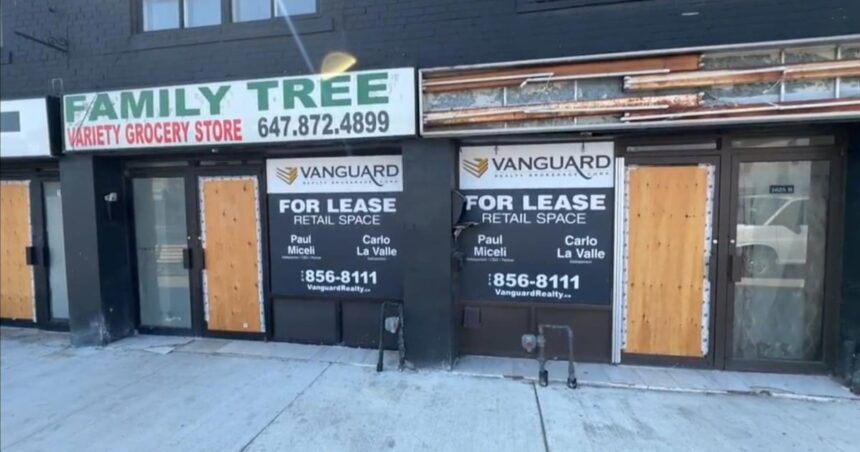The once-vibrant streets of Toronto’s Little Jamaica district have fallen eerily quiet as construction of the Eglinton Crosstown LRT enters its eleventh year, leaving a trail of shuttered storefronts and displaced entrepreneurs in its wake. What began as a promising infrastructure project has morphed into an existential crisis for one of the city’s most culturally significant neighborhoods.
“I’ve watched more than 45 businesses disappear since 2011,” says Natasha Reynolds, owner of Caribbean Flavours, one of the few remaining Black-owned establishments along Eglinton Avenue West. “Every month, another ‘For Lease’ sign appears where a family business once stood. This isn’t just construction—it’s community erasure.”
The Eglinton Crosstown LRT, initially scheduled for completion in 2020, has faced repeated delays with the opening date now pushed to late 2023. For businesses that managed to weather the COVID-19 pandemic, this extension represents a potentially fatal blow to their survival prospects.
According to data compiled by the Eglinton Hill Business Improvement Area, approximately 140 businesses have closed since construction began, with Black-owned enterprises disproportionately affected. The economic impact has been devastating, with remaining business owners reporting revenue declines of 35-70 percent compared to pre-construction levels.
“We’re not just losing shops—we’re losing cultural landmarks,” explains Dr. Michelle Johnson, professor of Urban Studies at the University of Toronto. “Little Jamaica has been a crucial hub for Caribbean immigrants since the 1970s. These businesses represent generational wealth and community anchors that, once lost, cannot be easily replaced.”
City officials have implemented modest support programs, including property tax relief and a $1 million recovery fund distributed across all affected businesses along the corridor. However, business owners argue these measures fall dramatically short of addressing the scale of economic damage.
“A $5,000 grant doesn’t compensate for years of lost revenue,” says Marcus Bailey, who recently closed his barbershop after 22 years in operation. “The construction barriers blocked visibility, eliminated parking, and diverted foot traffic. Eventually, customers just stopped trying to reach us.”
Community advocates have presented city council with a comprehensive support package that includes direct financial compensation, dedicated marketing initiatives for the district, and rent control measures to prevent displacement once the transit line eventually opens. The proposal also calls for preserving Little Jamaica’s cultural heritage through official designation as a cultural district.
“What we’re witnessing is textbook gentrification accelerated by infrastructure development,” notes urban planner Dwayne Mitchell. “Unless immediate intervention occurs, the completion of the LRT will simply provide convenient transit access to an entirely new business landscape, with none of the cultural character that made this neighborhood special.”
For those still holding on, each day represents both a struggle and an act of resistance. Several business owners have formed mutual aid networks, sharing resources and coordinating community events to maintain visibility despite physical barriers.
“I’m not just fighting for my business—I’m fighting for my community’s place in this city,” Reynolds emphasizes. “When you lose culturally specific businesses, you lose the spaces where people gather, where traditions continue, where newcomers find support.”
As Toronto continues its rapid development, the situation in Little Jamaica raises profound questions about equitable urban growth. When infrastructure improvements destroy the very communities they purport to serve, who truly benefits from progress? And can a neighborhood maintain its soul once its economic foundation has been dismantled?










